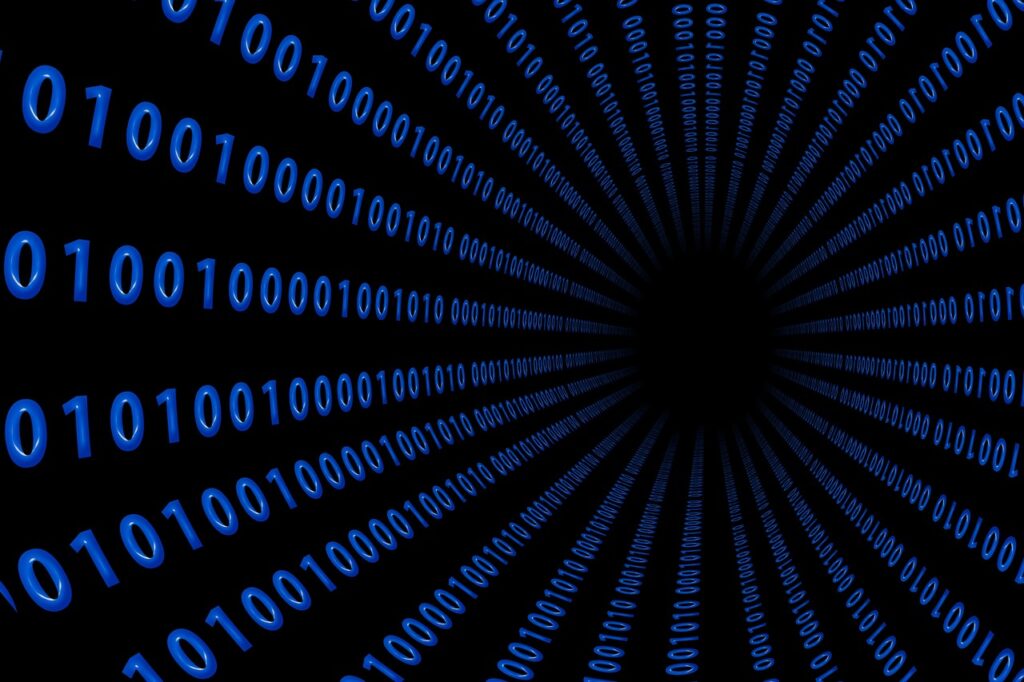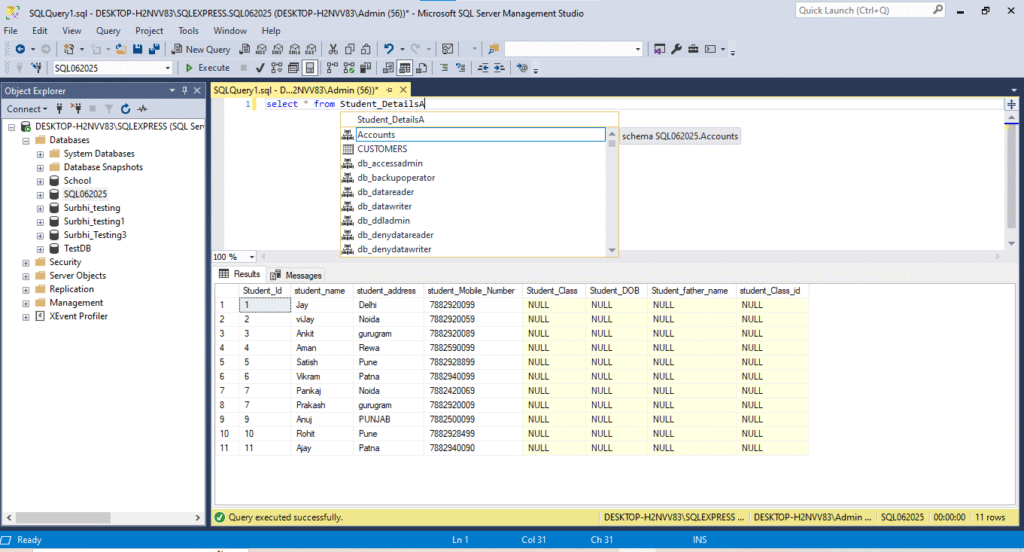In today’s hyper-connected world, the word “data” is used everywhere — from business meetings and news reports to social media and personal apps. But have you ever paused to ask, what exactly is data? Why is it so important? And how is it transforming the world around us?
In this blog post, we’ll take a deep dive into the meaning, types, importance, and real-world applications of data. Whether you’re a student, a tech enthusiast, or a business owner, understanding data is essential in the digital age.

Table of Contents
What is Data?
At its core, data refers to raw facts and figures — unprocessed pieces of information that may not have meaning on their own. It could be numbers, text, images, audio, video ,or even sensor readings. Once data is organized, interpreted, and analyzed, it becomes information — something meaningful that we can use to make decisions.
Information: – The Processing the data is called as information and information always provide meaning full statement to the user.
How is information created from data?
Think that you have a grocery list that contains 5 apples, 2 bananas, and milk. This is raw data. But when you analyze which item was bought the most or which item is the most expensive, then this data becomes information.

Data Example:
Data: 20, 25, 30
Information: These are the temperatures (in °C) recorded at 8 AM over the past three days.
Characteristics of Data
Before diving deeper, let’s look at a few core characteristics of data:
Accuracy – Data must be correct and reflect real-world facts.
Timeliness – It should be available when needed.
Completeness – Missing data can lead to poor decisions.
Relevance – Only useful data is valuable data.
Consistency – It must match across systems and time periods.
These characteristics ensure that data can be trusted and used effectively in decision-making.
Data Of Types
Data comes in different forms, and it’s important to understand how it’s categorized:
1. Structured Data
This is organized data, usually stored in rows and columns (like in a spreadsheet or database). It’s easy to enter, search, and analyze for example like Excel sheets or databases like Oracle, SQL Server, MySQL, PostgreSQL, IBM DB2.
- Example: Employee names and salaries in a company database.
2. Unstructured Data
Unstructured data doesn’t follow a specific format. It includes things like emails, videos, social media posts, and audio files.
- Example: Customer feedback on Twitter, YouTube videos.
3. Semi-Structured Data
This data lies somewhere in between structured and unstructured data. It has some organization, but not enough to fit neatly into a table.
- Example: JSON files, XML documents.
4.Qualitative Data
Describes feelings and opinions.
5. Quantitative Data
It is based on numbers and measurements.
Data Of Importance
Business: – Companies analyze sales data to understand customer preferences.
Healthcare: – Diseases are diagnosed and treatments are planned from patient data.
Education: – Personalized learning is possible from student performance data.
Goverment: – Policies are made from census data and resources are allocated.
Data Formats
Data can exist in many formats, such as:
- Text ( blog posts, documents)
- Numerical ( statistics, measurements)
- Audio (podcasts)
- Image (photographs)
- Video (recorded interviews)
- Sensor data (temperature, GPS signals)
All these formats can be captured, stored, processed, and analyzed using technology.
Sources of Data
Data is generated continuously from countless sources, including:
- People – Social media, e-commerce behavior, surveys.
- Businesses – Sales transactions, customer service logs.
- Machines – IoT devices, sensors, industrial equipment.
- Web & Digital Platforms – Website analytics, app usage.
- Government – Census data, economic reports, public records.
With the rise of the Internet of Things (IoT), even refrigerators and fitness bands are now sources of data!
The Importance of Data
In the digital age, data is considered the new oil — a resource that fuels innovation, growth, and insight. Here’s why data is crucial:
1. Better Decision Making
Organizations rely on data to make strategic decisions. For example, a business may use customer purchasing data to optimize inventory or launch new products.
2. Personalization
Companies like Netflix and Amazon use data to offer personalized recommendations based on user behavior.
3. Predictive Analysis
Data helps predict future trends, such as weather forecasting or stock market movements.
4. Automation
From chatbots to smart home devices, data enables machines to perform tasks without human intervention.
5. Competitive Advantage
Businesses that use data effectively can outpace competitors by responding faster to market changes.
Real-World Applications of Data
et’s explore some real-world use cases where data plays a vital role:
1. Healthcare
- Electronic Health Records (EHRs) store patient data.
- AI analyzes medical images to detect diseases early.
- Data helps track disease outbreaks, like COVID-19.
2. E-Commerce
- Shopping websites track user behavior to recommend products.
- Inventory systems use sales data to manage stock levels.
3. Finance
- Banks use customer data to assess creditworthiness.
- Fraud detection systems analyze transaction patterns in real time.
4. Education
- Schools analyze student performance data to improve teaching methods.
- Online learning platforms use data to personalize content delivery.
5. Transportation
- Ride-sharing apps like Uber use real-time GPS data.
- Logistics companies optimize delivery routes using traffic data.
Data Management: How is Data Handled?
Handling data involves several key processes, often collectively called data management:
- Data Collection – Gathering raw data from various sources.
- Data Storage – Saving data securely in databases or cloud systems.
- Data Cleaning – Removing errors, duplicates, or irrelevant data.
- Data Analysis – Using tools like Excel, Python, or BI software to make sense of the data.
- Data Visualization – Presenting data in charts, graphs, or dashboards to make it easier to understand.
- Data Security – Protecting sensitive data from breaches or unauthorized access.
Big Data: When Data Gets Massive
With the explosion of internet-connected devices and online activities, we now deal with big data — extremely large datasets that are too complex for traditional tools.
Big data is defined by the 3 Vs:
- Volume – Massive amounts of data.
- Velocity – Data being generated quickly.
- Variety – Many types of data (text, images, etc.).
Technologies like Hadoop, Spark, and cloud computing help store and process big data efficiently.
Future OF Data
Data is evolving every day. With advancements in artificial intelligence, machine learning, and edge computing, the way we collect and use data will become even more powerful.
Soon, we’ll see smarter applications that:
- Predict health risks before symptoms show
- Automate entire business processes
- Provide hyper-personalized user experiences
However, with this growth comes responsibility. Ethical concerns like data privacy, misuse, and digital surveillance must be addressed seriously.
Conclusion
Data is more than just numbers and text — it’s the foundation of the digital world. From personalizing our online experience to driving billion-dollar business strategies, data is everywhere and impacts everything.
Understanding what data is, how it works, and why it matters is essential in our technology-driven era. Whether you’re a tech-savvy developer or just someone curious about the digital age, one thing is clear: data is the future, and the future is already here.
